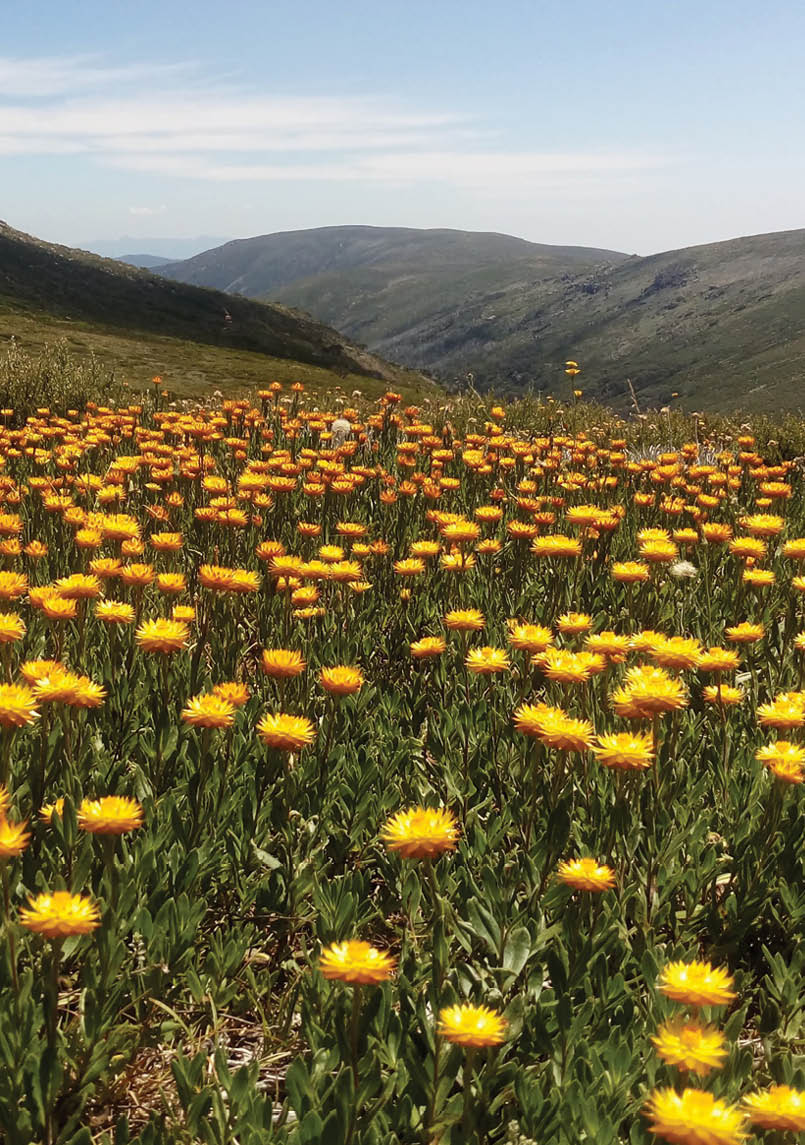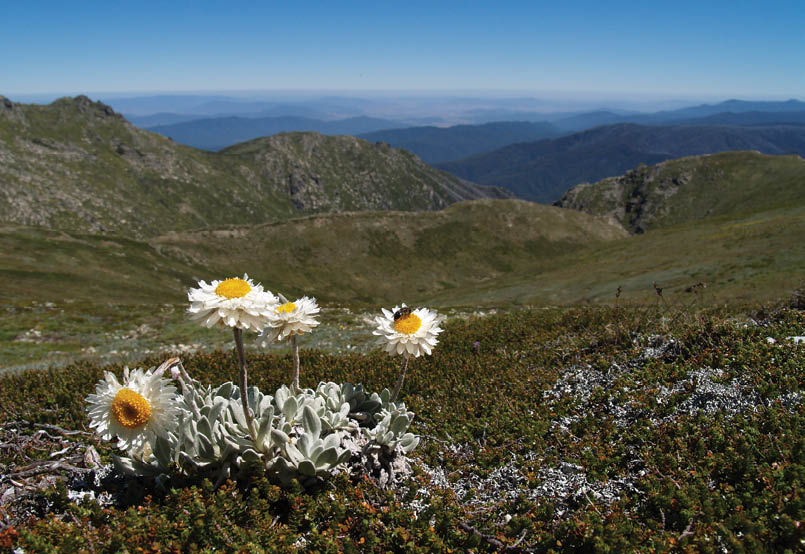


In the December 2021 edition of the Victorian National Parks Association magazine Park Watch, Parks Protection Campaigner Phil Ingamells wrote the following two articles.
Alpine National ParkNinaKerr_64


Feral Horse Update
Phil Ingamells, Victorian National Parks Association
42 | BWA February 2022
It’s been a tough journey, but Victoria now has a real plan for alpine recovery.
Nature conservation is largely about contested territory, and the battle for Victoria’s high country has been no exception.
Since well before 1974 when the Victorian National Parks Association published Dick Johnson’s remarkable book The Alps at the Crossroads, we have fought for a substantial Alpine National Park, fought to have licensed cattle grazing removed from the park, and more recently campaigned to have management of the high country – and the rest of Victoria’s parks system – properly resourced with both expertise and funds.
One of the most difficult problems in that journey has been that the high country is one of those places where impeccable evidence is routinely confounded by entrenched assumptions, where the truth is undermined by community ignorance or, unfortunately, outright mischief.
The Alpine National Park’s feral horse population (about 5000–6000 in Victoria with an additional 20,000 in Kosciuszko National Park over the NSW border) has been the subject of the most recent of those battles.
I remember one moment when a brumby advocate, invited by Parks Victoria to be a privileged member of an alpine horse advisory panel, assured the group that a scientific paper said horses improve the diversity of birds in grasslands. It turned out to be an Argentinian paper, and it actually said the opposite: horses trample nesting sites in that country’s extensive Pampas plains.
That’s a small problem, perhaps, but the relentless feral social media campaign that has personally targeted individuals, including park staff whose only crime is to call for evidence-based management of a national park, is no small matter at all.
Parks Victoria’s final Protection of the Alpine National Park: Feral Horse Action Plan, released recently, sets up a decade-long management program that has the capacity to reverse the declines in alpine ecosystems brought about by the expanding feral horse population.
It will aim to remove all horses from the Bogong High Plains and reduce the main population in the eastern part of the park by up to 500 in the first year. Rehoming will be the first option, with ground shooting and then aerial shooting considered to be the most humane method of controlling the remaining animals.
Brumby running, the control method championed by many horse supporters whereby wild horses are rounded up, roped, then trucked or driven out of the park before ending up in a knackery, is not supported by animal welfare advocates and won’t be allowed in the future.
The plan is the result of many decades of scientific study, and involved years of consultation with the broad community, brumby support groups, cattlemen, animal welfare experts, Aboriginal communities and ecologists. Along the way Parks Victoria has also had to defend its plan in a series of cases in the Supreme and Federal Courts, each of which resulted in unambiguous support for Parks Victoria’s intentions to control these feral animals.
We congratulate Parks Victoria in its pursuit of a plan that has real integrity, and we congratulate the Victorian Environment Minister for her unwavering support for that endeavour. We also congratulate our members for their crucial support for the long campaign to restore the ecological integrity, and the great beauty, of the Alpine National Park.
Now all we need is to get the NSW Government to control horses over the border. And, yes, we need to make sure the plans for managing all hard hooved animals are resourced well into the future.
Feral Horses in Victoria
BWA February 2022 | 43


The deeply flawed draft 'heritage' horse plan from NSW is a burden for feral horse management in Victoria, Phil Ingamells writes.
As long ago as 1986, the environment ministers of Victoria, NSW, the ACT and the federal government put their signatures to a Memorandum of Understanding (MOU) that would improve conservation management across Australia’s alpine region national parks for decades to come.
Still current (though now signed by the heads of the park management agencies), the MOU promises to achieve "excellence in conservation management … through an active program of cross-border cooperation".
How strange then, that there seems to have been no attempt to co-operate on the control of some 8000 feral horses that roam on both sides of the NSW/Victoria border.
In 2018, the NSW government passed its extraordinary Kosciuszko National Park Wild Horse Heritage Act, a law that actually protects feral animals in the most prized conservation reserve in that state. This law was largely driven by then-Deputy Premier John Barilaro, who has since resigned but left alpine management chaos in his wake.
The natural values of the alpine region of mainland Australia have been the subject of vigilant study by botanists, zoologists, soil scientists and ecologists for well over 150 years. The breadth of that knowledge has been recognised in the National Heritage listing for the Australian Alps National Parks (AANP).
The listing states that "The AANP has outstanding heritage value for the scientific research that has taken place since the 1830s, demonstrated by the density and continuity of scientific endeavour".
Alpine sunray in Kosciuszko National Park
Horseplay in NSW
44 | BWA February 2022




That National Heritage listing sits within the federal government’s Environment Protection and Biodiversity Conservation Act 1999, along with recognition of a series of threatened alpine plants and animals, and the critical listing of Alpine Sphagnum Bogs and Associated Fens as a nationally threatened ecological community.
Horses trash peat beds, bogs and fens.
If that needed any further clarification, in a 2019 Federal Court case brought against Parks Victoria by the Australian Brumby Alliance, the Judge unequivocally ruled that controlling feral horses would have no discernible impact on the cultural heritage values of the Australian Alps.
Moreover, the Judge said that the scientific evidence of the damage horses cause was "persuasive" and that retaining horses on the high plains "would not be an appropriate control of the threat they present to ecosystems, habitats and species in those alpine areas".
The Judge dismissed contrary submissions that horses didn’t harm the high country, saying it "was not supported by scientific studies and was not persuasive".
He was stating what pretty much anyone who walks in the high country knows, of course, but his judgement after such a comprehensive Federal Court trial should bear decisive weight.
It’s time to stop talking about feral horses, and act.
Meanwhile, the Victorian Government has released its final alpine feral horse management plan that aims to take all horses off the Bogong High Plains within three years, and reduce horse numbers in the eastern alps to at least levels that allow the recovery of alpine ecosystems there.
The ACT has been keeping their Namadgi National Park horse free for decades.
Hopefully, under a new environment minister, the NSW Government will re-interpret its horse heritage law, and all park agencies can fully co-operate on alpine management under the long-standing MOU.
It’s good to speak about 'excellence', and 'co-operation' in management, but far better to actually enact these things.
The links below were not in the Park Watch articles, and give a good background to the feral horse problem.
The last one refers to Reining in feral horses in Kosciuszko National Park which says that:
"Drawing on the best available information, our analysis suggests the potential benefits that may come from reducing feral horse numbers in the park could be significant and in the order of $19-$50 million per year."
Broad-toothed Rat in the Alpine National Park, Victoria
BWA February 2022 | 45